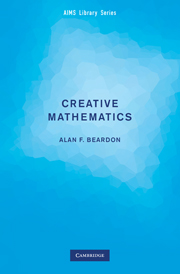15 - Problem K: Solution
Published online by Cambridge University Press: 16 May 2024
Summary
Obviously, we should begin by obtaining the values of Xn from a computer. The answers will depend on the computer used but, in any case, they are not exact. One computer gave the following values for n = 1, … , 7 (and the value 0 thereafter):
This suggests that Xn → 0 as n→∞, so we should prove this first. The Taylor series for gives, for small x,∼ 1 − x/2, so we see that, with x = 1/102n,
where there are n zeros between the decimal point and the digit 5. However, this is only an approximation. The formula for the difference of two squares shows that
and this proves that Xn → 0 as n→∞. Notice that this also shows that Xn > 1/(2 × 10n), so that the entry corresponding to n = 5 in the list is definitely incorrect. The values of Xn given by (1) were computed, and we obtained the following values:
This list exhibits a greater degree of regularity than the first list and, from this information, we conjecture that the decimal expansion of Xn begins with n zeros, followed by 5, and then 2n − 1 more zeros.
• Is this conjecture correct?
- Type
- Chapter
- Information
- Creative MathematicsA Gateway to Research, pp. 67 - 68Publisher: Cambridge University PressPrint publication year: 2009

